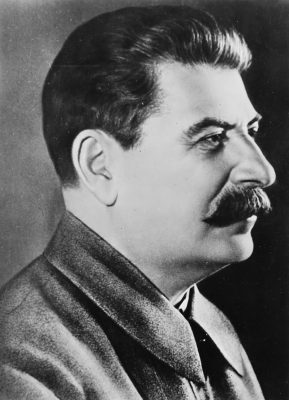Stalinism is known as a style of rule based on terror and totalitarian control over its citizens. This style of rule was used by Joseph Stalin, who was the leader of the Soviet Union from 1929 until 1953.
Joseph Stalin was not a powerful figure in the 1917 Revolution, although there were attempts during his rule to portray him as Vladimir Lenin’s right-hand man. Nonetheless, Stalin officiated as People’s Commissar for Nationality Affairs and People’s Commissar for State Control until 1922. He was also a member of the Communist Party’s Political Bureau and Organizational Bureau. In April 1922, Stalin took the post of General Secretary of the Communist Party. Although this position was not very important at the time, Stalin made use of it by controlling the appointments of members and creating connections. In doing so, he slowly established for himself a strong position in the party.
There were many intellectuals and orators in the Communist Party, but Stalin was different. He was not after charisma or showing off intellectual power. He went straight to practical methods as a means to achieve his aims. Ideologies did not matter to him that much. When the Bolsheviks seized power, Stalin was tasked with managing the programs of the party and the state. After Lenin died in 1924, intellectuals struggled for power, but Stalin already had actual power — power that he had accumulated for himself even before Lenin died. Before the beginning of the 1930s, all of Stalin’s opponents were already eliminated, and Stalinist rule was already firmly established. Stalin preached a single, large, and strong party and criticized anybody who allowed talks that ran counter to the party’s strategies. He made the party’s doctrines unquestionable and accused those questioning them of betraying the party. Stalin portrayed himself as the single and unerring interpreter of the Communist ideology. This cult of personality that Stalin promoted made him the undisputed ruler of Russia, immune to any criticism from any opponent.
The secret police could eliminate anyone who publicly criticized him. In 1956, three years after Stalin’s death, Nikita Khrushchev blamed Stalin for his personality cult and its evil consequences. Despite this, however, Stalin’s successors adopted the fundamentals of Stalinistic rule, including the one-party dominion over a planned economy and a terror-tactic response to any group that disagreed with the party. Communist societies like North Korea and Cuba followed this style of rule.
One of Stalinism’s central doctrines was “socialism in one country,” which meant that although global socialism remained a goal, strengthening socialism in the country was the top priority. Russia may well be in the middle of capitalist countries, but still, a strong socialist economy could flourish within the borders of the Soviet Union. Nearing the end of the 1920s, Stalin started to push the nation into intense industrialization. Farmers were forced to work on farms, which produced food bought at a cheap price by the state and fed to industrial workers. The emphasis on bolstering heavy industry was Stalinism’s way of developing an economically-independent Russia and achieving freedom from capitalist help.
Although socialist doctrine asserts that the state would eventually dissolve when capitalism was overthrown, Stalin held a different view. According to the Soviet dictator, the state must first become more powerful before it can be allowed to dissolve. He reasoned that opponents of socialism would try to thwart the eventual flourishing of a socialist society. And so, to stop the enemies of socialism, power must be concentrated in his own hands. From 1936 to 1938, Stalin ordered the killing of 700,000 people whom he suspected to be enemies of the state. Some historians estimate that the death toll could have reached up to 1.2 million. Before the 1930s ended, even those involved in the 1917 Revolution were dead. Stalin sent millions more to forced-labor camps.
Some Soviet historians claim that these labor camps claimed the lives of 20 million people, along with executions, imprisonment, famine, and exile.
